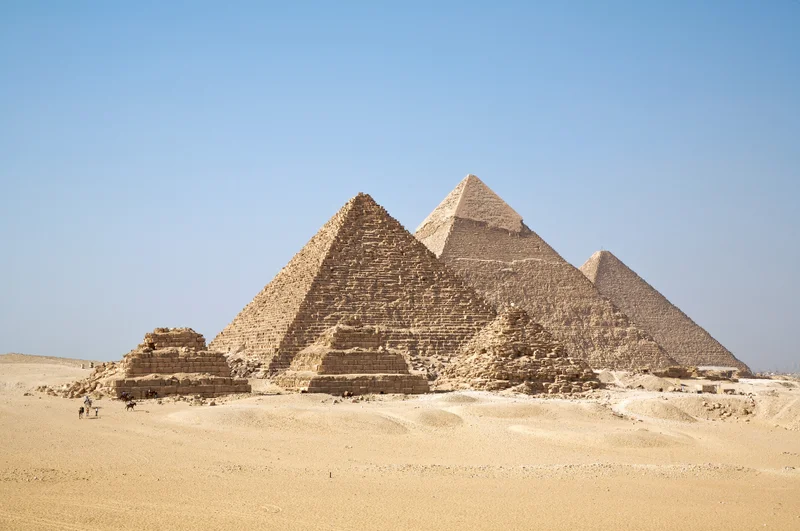UNESCO World Heritage Sites in Egypt
Heritage Overview
Egypt's UNESCO World Heritage sites preserve humanity's most iconic ancient civilisation, showcasing monumental architecture, sophisticated religious and funerary complexes, and urban centres that flourished for over three millennia. The heritage encompasses some of the world's most recognisable monuments alongside Christian and Islamic architectural treasures spanning multiple historical periods. Pharaonic monuments demonstrate extraordinary engineering capabilities, mathematical knowledge, and organisational sophistication, featuring massive pyramid complexes, elaborate temple compounds, and decorated tombs carved into desert cliffs. These sites preserve hieroglyphic inscriptions, detailed reliefs depicting religious ceremonies and daily life, and architectural innovations that influenced subsequent Mediterranean civilisations. The monumental scale and precision of construction continue astounding modern observers. Early Christian heritage preserves exceptional examples of Coptic monasticism and religious art in desert settings. Islamic architectural treasures showcase medieval urban planning, defensive fortifications, and religious complexes demonstrating Cairo's historical importance as an Islamic cultural centre. Together, Egypt's heritage illustrates one of humanity's earliest and most enduring civilisations, the transition from ancient Egyptian religion through Christianity to Islam, and the continuous occupation and cultural development of the Nile Valley that supported complex societies through sophisticated agricultural and administrative systems.
Essential Information
Visa Requirements
Most foreign visitors require visas obtainable on arrival at Egyptian airports (Cairo, Luxor, Hurghada, Sharm el-Sheikh) for USD 25, valid for 30 days single entry. E-visas are available online before travel through the official portal, offering 30-day single or multiple entry options. Citizens of some countries including Australia, Canada, European Union, Japan, and the United States can obtain visas on arrival, whilst others require advance applications through Egyptian embassies. Passport validity of six months beyond arrival is mandatory. Extensions are possible through Mogamma government building in Cairo. Overstaying incurs daily fines. Sinai resorts offer free 15-day Sinai-only permits.
Currency
The official currency is the Egyptian Pound (EGP or LE), subject to exchange rate fluctuations. Credit cards (Visa, Mastercard) are accepted in hotels, larger restaurants, tourist shops, and some attractions, though cash remains essential for most transactions. ATMs are widespread in cities and tourist areas, dispensing Egyptian pounds with limits typically around 5,000-10,000 EGP and charging fees for foreign cards. Bring US dollars or euros for exchange at banks or authorised offices, offering better rates than airports. Cash is necessary for markets, street vendors, tips, taxis, and smaller establishments. Small denominations are useful. Tipping (baksheesh) is expected for many services.
Language
The official language is Modern Standard Arabic, though Egyptian Arabic (Masri) is the everyday spoken dialect, widely understood across the Arab world due to Egypt's media influence. English is increasingly common, particularly amongst younger generations, tourism professionals, and in major cities and tourist areas. French is spoken by some older, educated Egyptians. Tourist sites, hotels, and restaurants typically have English-speaking staff and English signage. Hieroglyphic writing is ancient, not modern. Arabic uses distinctive script written right to left. Learning basic Arabic phrases (Ahlan for hello, Shukran for thank you) is appreciated and facilitates interactions whilst navigating markets and local areas.
Climate
Egypt experiences hot desert climate with minimal rainfall and intense sun year-round. Summer (May-September) brings extreme heat with temperatures regularly exceeding 35-40°C, reaching 45°C in desert areas, making outdoor activities challenging during midday. Winter (November-March) offers pleasant conditions with temperatures ranging 15-25°C, ideal for heritage site visits. Spring (March-April) and autumn (October-November) provide comfortable weather but occasionally experience khamseen—hot, dry, sand-laden desert winds. Coastal areas benefit from Mediterranean breezes providing relief. The Nile Valley experiences high temperatures year-round. November through February represents optimal visiting periods, offering comfortable temperatures for extensive outdoor exploration of archaeological sites whilst avoiding summer's oppressive heat.
